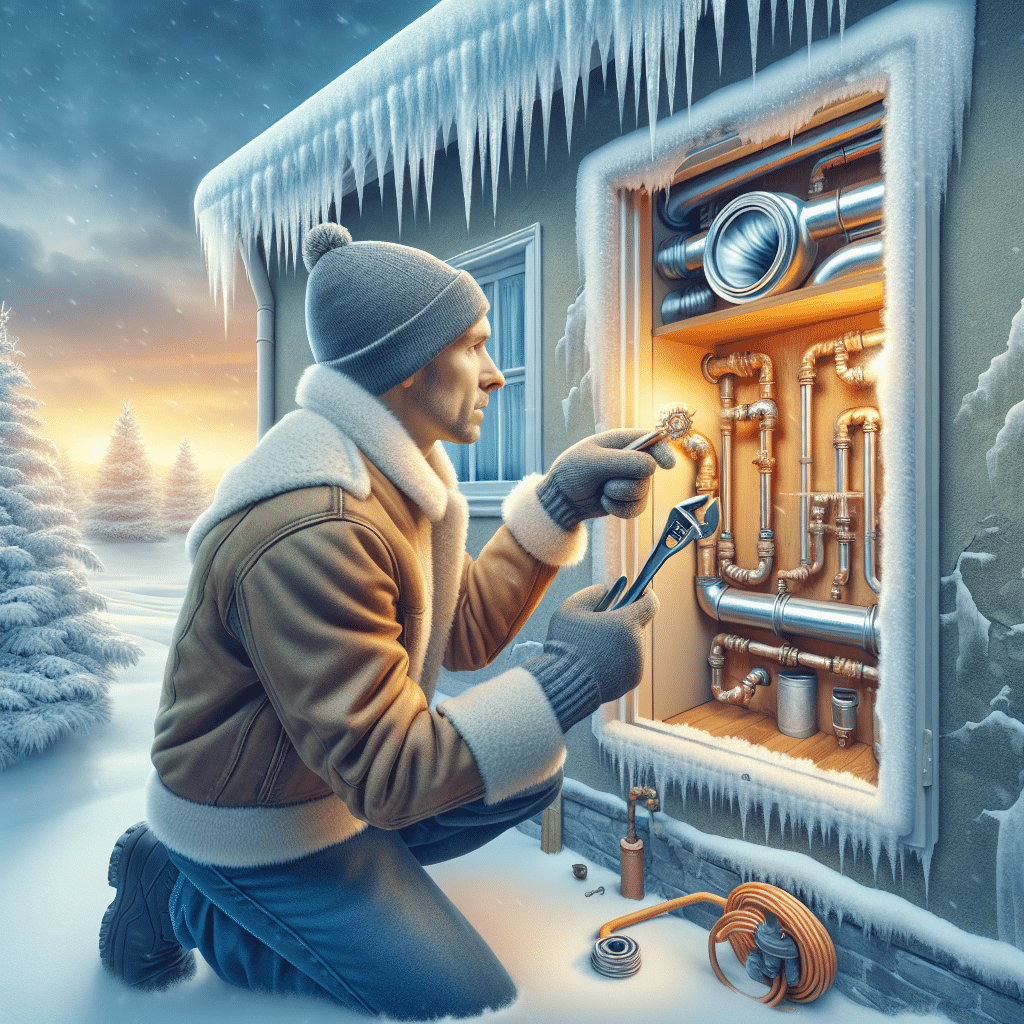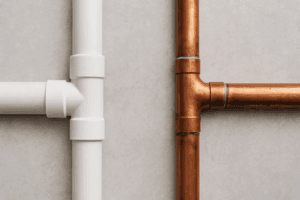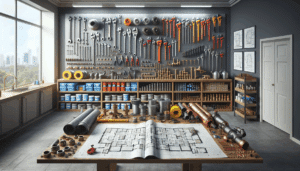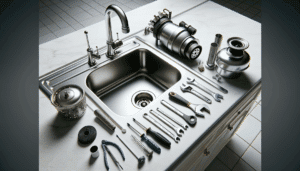Winter can bring unexpected challenges to homeowners, and frozen pipes often top the list. Our blog is here to provide easy, practical steps to keep your plumbing safe during the cold snaps. Whether you’re a new homeowner or a seasoned DIYer, this guide will help ensure your pipes are winter-ready.
Understanding the Risks of Frozen Pipes
Frozen pipes aren’t just a nuisance; they can lead to significant damage and costly repairs. When water inside the pipes freezes, it expands, potentially causing the pipes to burst. This can result in water damage to your home and expensive restoration processes.
By recognizing the risks, we can take proactive steps to prevent these issues. Early prevention is always more affordable and stress-free than dealing with emergencies, especially when temperatures drop unexpectedly.
Know Where Your Pipes Are Located
One of the first steps in protecting your home is identifying where your pipes are located. Pipes in unheated areas such as basements, attics, garages, and crawl spaces are more susceptible to freezing.
Conduct a thorough walk-through of your home to check these areas. Knowing where your pipes are will allow you to focus your protection efforts more effectively.
Insulate Your Pipes
Insulating your pipes is a key defense against freezing. Use foam pipe insulation or heat tape to cover exposed pipes in unheated areas.
These materials provide a barrier against the cold, keeping the heat in and the freeze out. Remember, effective insulation can be a game-changer in preventing those costly bursts.
Let Faucets Drip
Allowing faucets to drip during extreme cold snaps can relieve pressure in the system, reducing the risk of a pipe bursting. This simple act maintains movement in the pipes, which hampers freezing.
Choose faucets connected to exposed pipes and let them drip slowly. The small increase in your water bill will be much less than the cost of repairing burst pipes.
Seal Leaks and Drafts
Sealing leaks and drafts near pipes is crucial. Cold air entering through cracks can rapidly freeze pipes, especially in unheated areas.
Use weatherstripping or caulk to seal gaps. Pay attention to areas around windows, doors, and even electrical wiring penetrating walls and floors.
Keep the Heat On
Maintaining a sensible level of heat in your home, even when you’re away, can prevent freezing. Set your thermostat no lower than 55 degrees Fahrenheit.
This constant heat keeps the entire house within a safe temperature range. It’s a small adjustment that can protect your home while you’re not there.
Open Cabinet Doors
Opening cabinet doors helps warm air circulate to unheated areas, such as under sinks in kitchens and bathrooms. This allows your home’s heat to reach pipes tucked away in cabinets.
Remember to remove any harmful substances if you have young children or pets. Ensuring warm air can circulate to these hidden spots helps ensure their protection.
Use a Space Heater in Vulnerable Areas
If you have areas in your home that are particularly susceptible to cold, consider using a space heater. This can be especially beneficial in basements or garages where central heating might not reach effectively.
Ensure that the space heater is used safely, with precautions taken to avoid fire hazards. Never leave them unattended, and always maintain an adequate distance from flammable materials.
Install Pipe Heating Cables
Pipe heating cables can be an excellent solution for particularly at-risk pipes. These cables work by using electricity to generate heat directly on the pipe, preventing freezing.
The installation might require a professional touch, but they’re a worthwhile investment for peace of mind during the coldest months. These cables are energy-efficient and can save money on repairs in the long run.
What to Do If Your Pipes Freeze
- Shut off the water: Locate and turn off your main water valve to prevent further damage.
- Open faucets: Turn on faucets to relieve pressure in the pipes as they thaw.
- Apply heat: Use a hairdryer or space heater to gently thaw the pipes, starting near the faucet.
- Check for leaks: Once thawed, inspect for leaks or damage and address them immediately.
- Call a professional: If in doubt, or if the situation seems risky, Contact Us for expert help.
Conclusion
Keeping your pipes safe during winter doesn’t have to be a daunting task. If you need expert assistance, feel free to give us a call at 480-535-0728 or Request a Free Quote from Gilbert Plumbing Company today!



